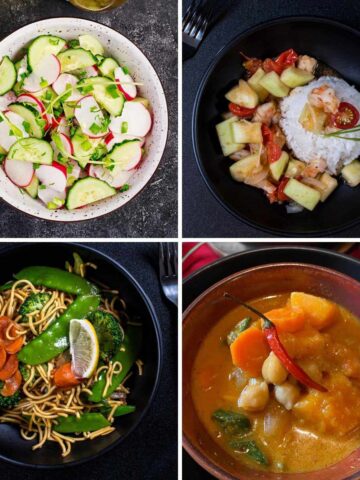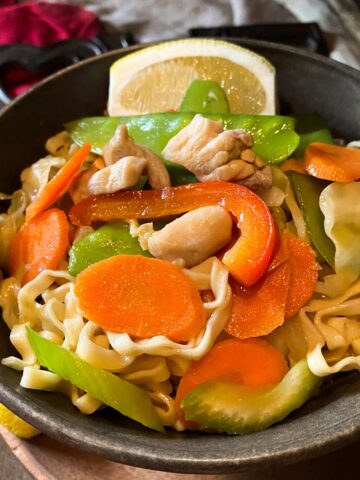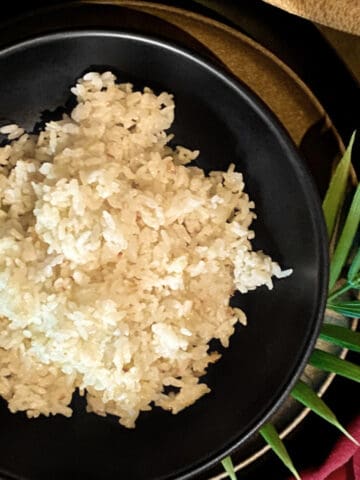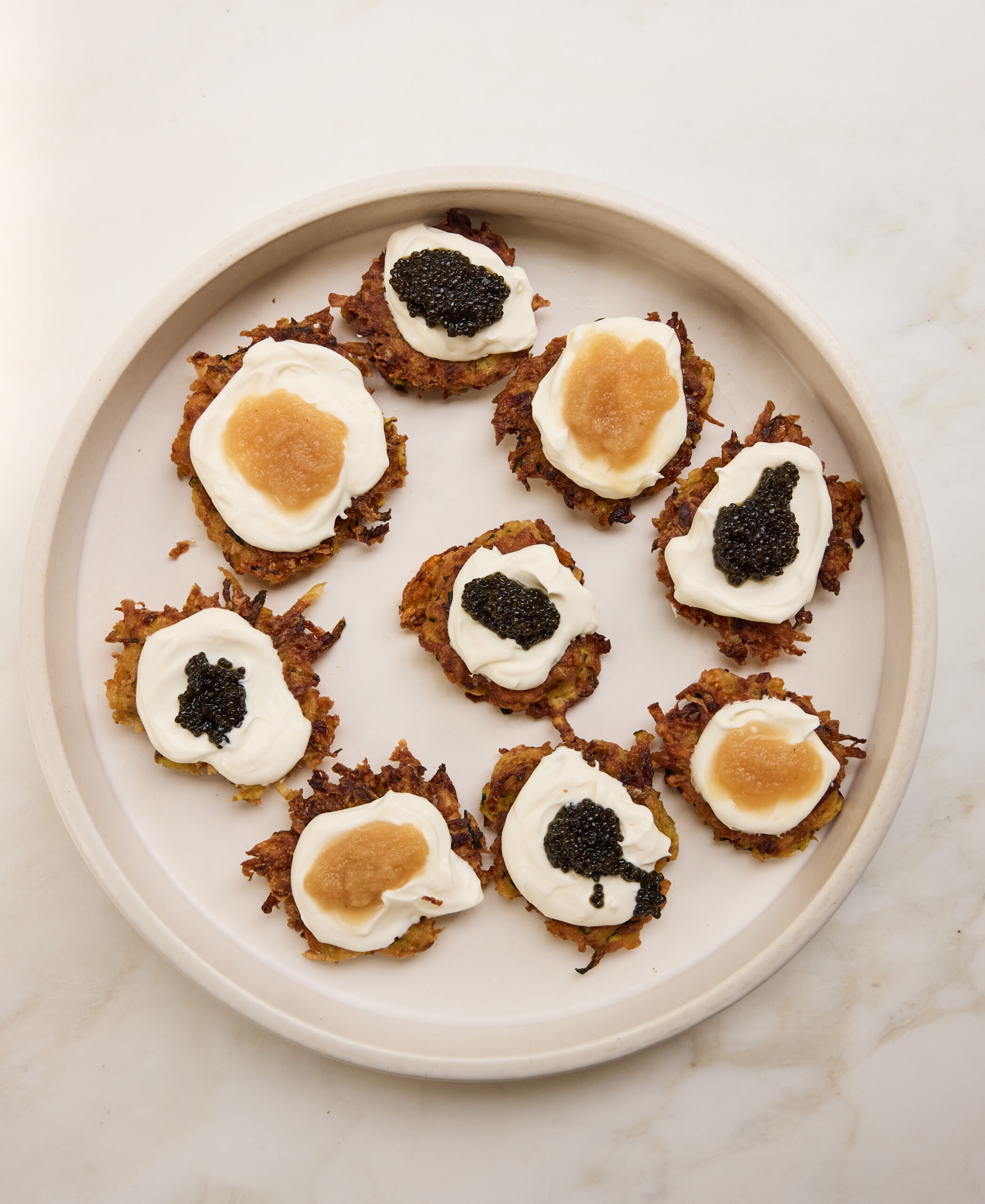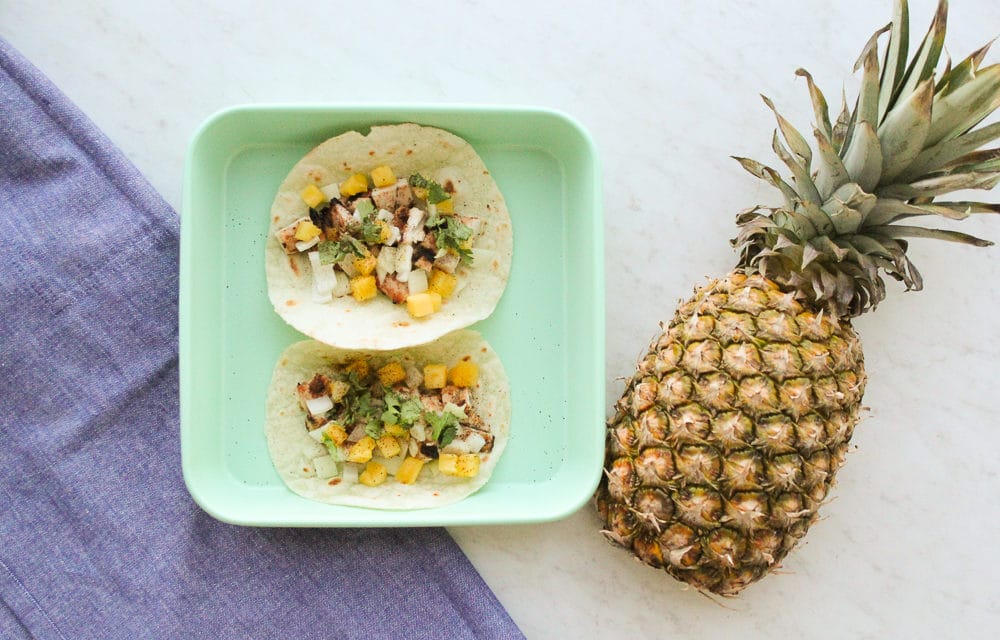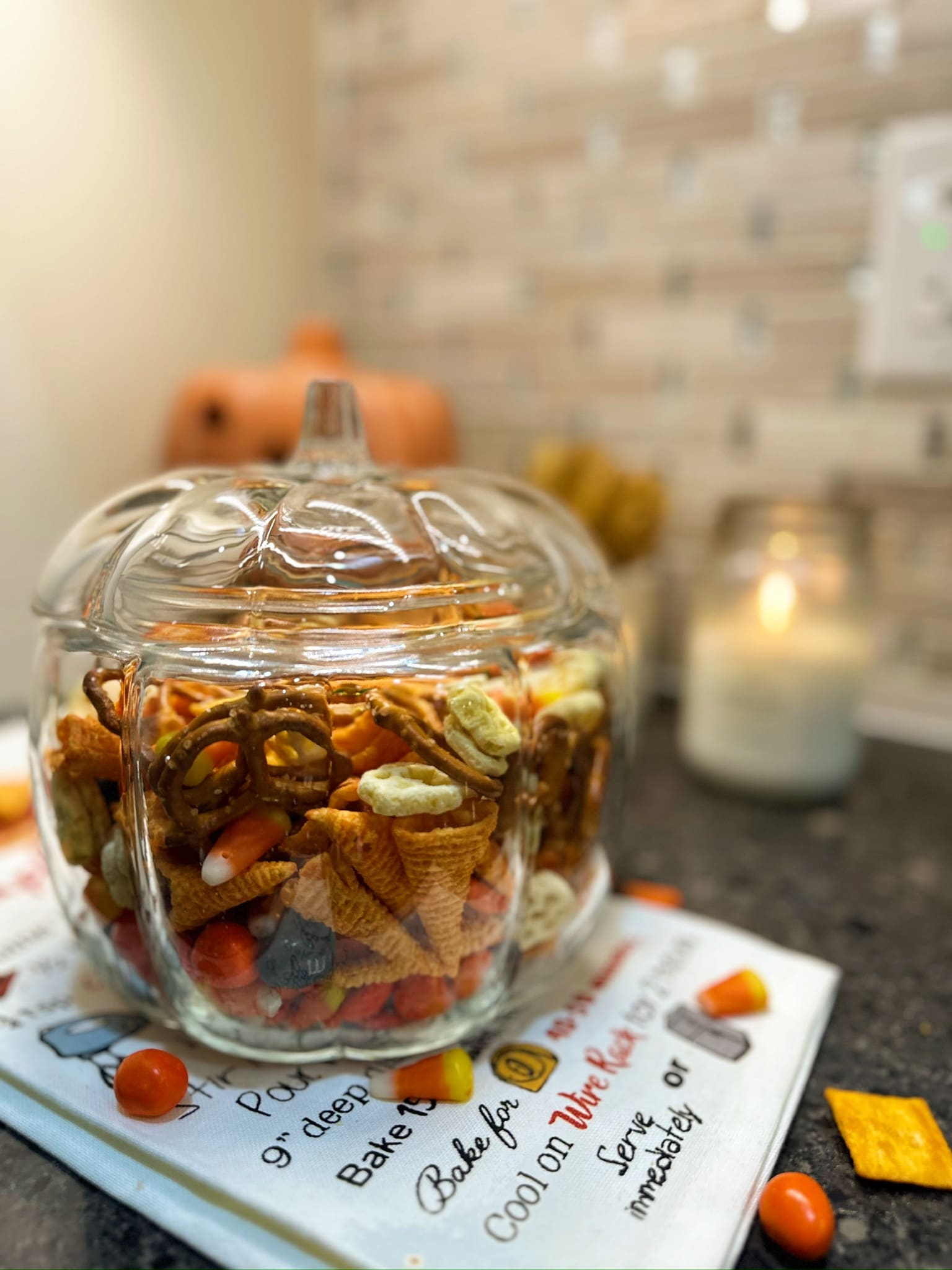Bagoong Alamang is a flavorful Filipino condiment made from fermented shrimp paste, commonly used to elevate dishes with its bold, salty umami. This homemade recipe captures the essence of traditional flavors (using only five ingredients) and takes no more than five minutes to make! This bagoong alamang is perfect for pairing with green mangoes or... Read More The post Bagoong Alamang Guisado Recipe (Filipino Shrimp Paste) appeared first on JOZmahal.
Bagoong Alamang is a flavorful Filipino condiment made from fermented shrimp paste, commonly used to elevate dishes with its bold, salty umami. This homemade recipe captures the essence of traditional flavors (using only five ingredients) and takes no more than five minutes to make!

This bagoong alamang is perfect for pairing with green mangoes or adding depth to stews like Kare-Kare. It's a versatile ingredient that brings an authentic Filipino touch to any meal.
What is Bagoong
Bagoong is a common ingredient in Southeast Asian cuisine, particularly in Filipino dishes, made from tiny shrimp that are salted and fermented.
Recognizable by its strong, pungent aroma and the occasional white spots (caused by the recrystallization of salt or the natural fat from the shrimp), bagoong is a staple in Asian culture.
Aside from being an essential pairing for the Filipino dish Beef Kare-Kare, it’s also enjoyed with unripe mangoes, grilled eggplant, or simply served with plain rice for a burst of umami.
Ingredients
To make bagoong, the following basic ingredients are often used:
- Olive Oil: Used for sautéing and enhancing the richness of the dish. You can substitute it with vegetable oil or any neutral oil like canola oil.
- Garlic: Adds a pungent, savory aroma and depth of flavor to the bagoong. If fresh garlic is unavailable, garlic powder can be used as a substitute, though fresh is always preferable for the best flavor.
- Cane Vinegar: Provides a tangy acidity that balances the strong, salty flavor of the fermented shrimp. You can substitute it with apple cider vinegar or white vinegar if cane vinegar is unavailable.
- White Granulated Sugar: Sweetens the bagoong, balancing out the saltiness. Brown sugar or coconut sugar can be used as a substitute, offering a deeper, caramelized flavor.
- Bagoong: Is an essential ingredient in Filipino cooking, made from small shrimp that are fermented to achieve a savory flavor. Known for its importance in various Asian cultures, the quality of the product is key, and it can be customized with ingredients like garlic and sugar to suit different tastes.
Each ingredient contributes to the unique flavor profile of bagoong, but substitutions can be made (see below) without losing the dish’s essence.
Refer to the Bagoong Guisado recipe card below for exact quantities.
Substitutions For The Basic Ingredients
Here are some substitutes for the basic ingredients used to make bagoong:
- Olive Oil:
- Substitute with vegetable oil, canola oil, or peanut oil. These neutral oils will work well for sautéing without altering the flavor.
- Garlic:
- If fresh garlic isn’t available, you can use garlic powder or garlic paste. Shallots or onions can also add a similar aromatic flavor.
- Cane Vinegar:
- Use apple cider vinegar, white vinegar, or rice vinegar as substitutes. Coconut vinegar also works well for a more tropical flavor.
- White Granulated Sugar:
- Replace with brown sugar, coconut sugar, or even honey for a different kind of sweetness. Maple syrup or agave nectar could also be used as a natural sweetener.
These alternatives will still deliver a delicious version of bagoong while allowing flexibility with ingredients.
What Can I Use As A Substitute for Bagoong
If you need a substitute for bagoong (fermented shrimp paste), here are a few options:
- Fish Sauce: This is the closest alternative, as it also has a strong umami flavor. Use it in smaller amounts, as it's generally saltier.
- Soy Sauce: While it lacks the seafood flavor, soy sauce can provide umami and saltiness. You might want to add a bit of garlic or chili for extra depth.
- Miso Paste: For a vegetarian option, miso can mimic the fermented flavor. Use a small amount, and consider adding a bit of salt for extra seasoning.
- Anchovy Paste: This can also work well, as it has a similar taste profile. Mix it with a little sugar to balance the saltiness.
- Homemade Substitute: Combine soy sauce with minced garlic, a bit of sugar, and a splash of vinegar to create a makeshift version.
Each of these substitutes will alter the flavor slightly, but they can work well in recipes that call for bagoong. Be sure to check out my recipe for Beef Kare Kare (with peanut butter or a peanut-free option).
Instructions
Bagoong, pronounced as buh-goo-ONG, is a Philippine salty and savory condiment made of either shrimp or anchovies. This is a perfect condiment to balance out the nutty and roasted flavors of the dish.

- Step 1: In a medium-sized skillet, sauté garlic in olive oil until golden brown over medium heat.
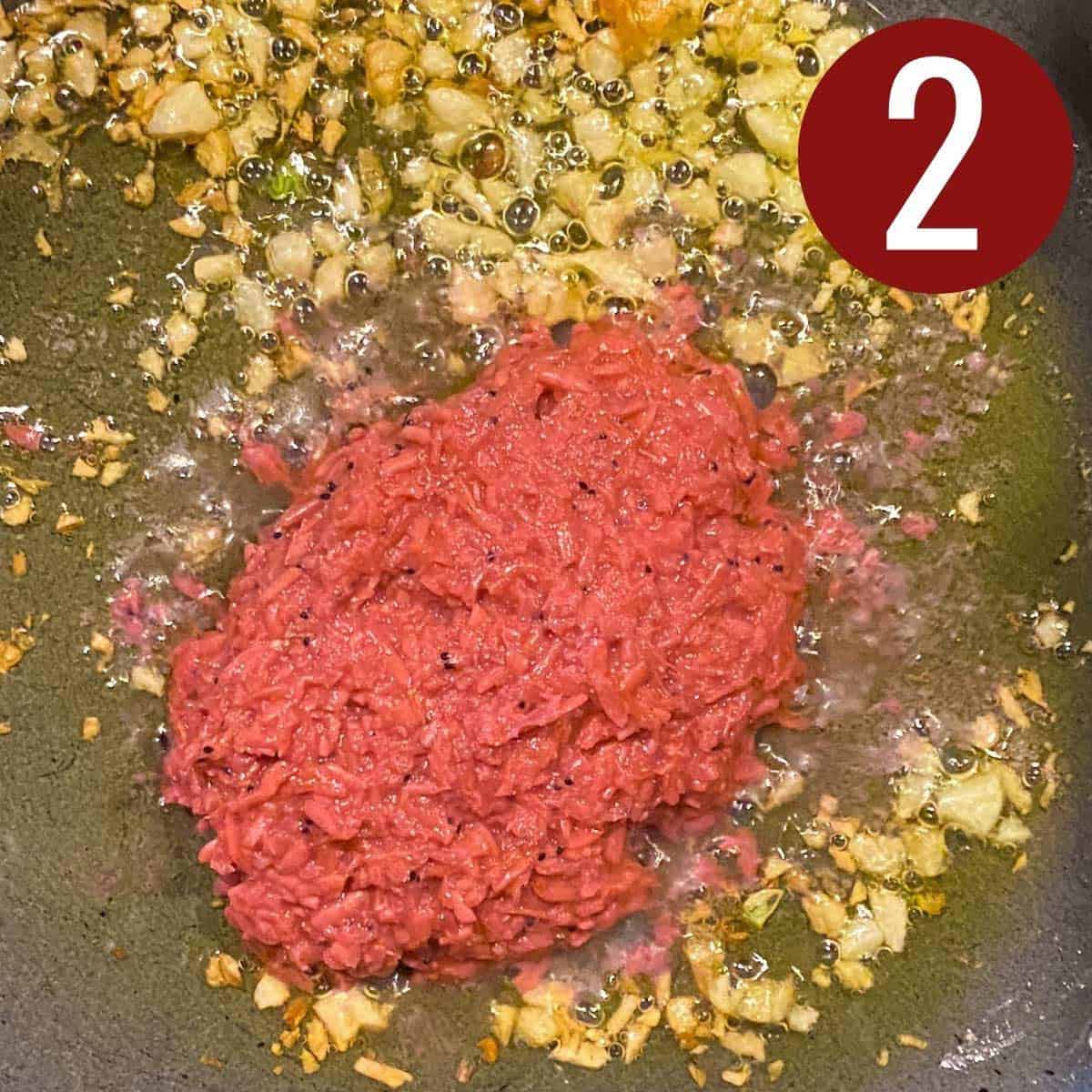
- Step 2: Add the bagoong shrimp paste. Stir until well combined.

- Step 3: Add vinegar and sugar to the shrimp paste mixture. Turn the heat to low and let it simmer for about 5 minutes.
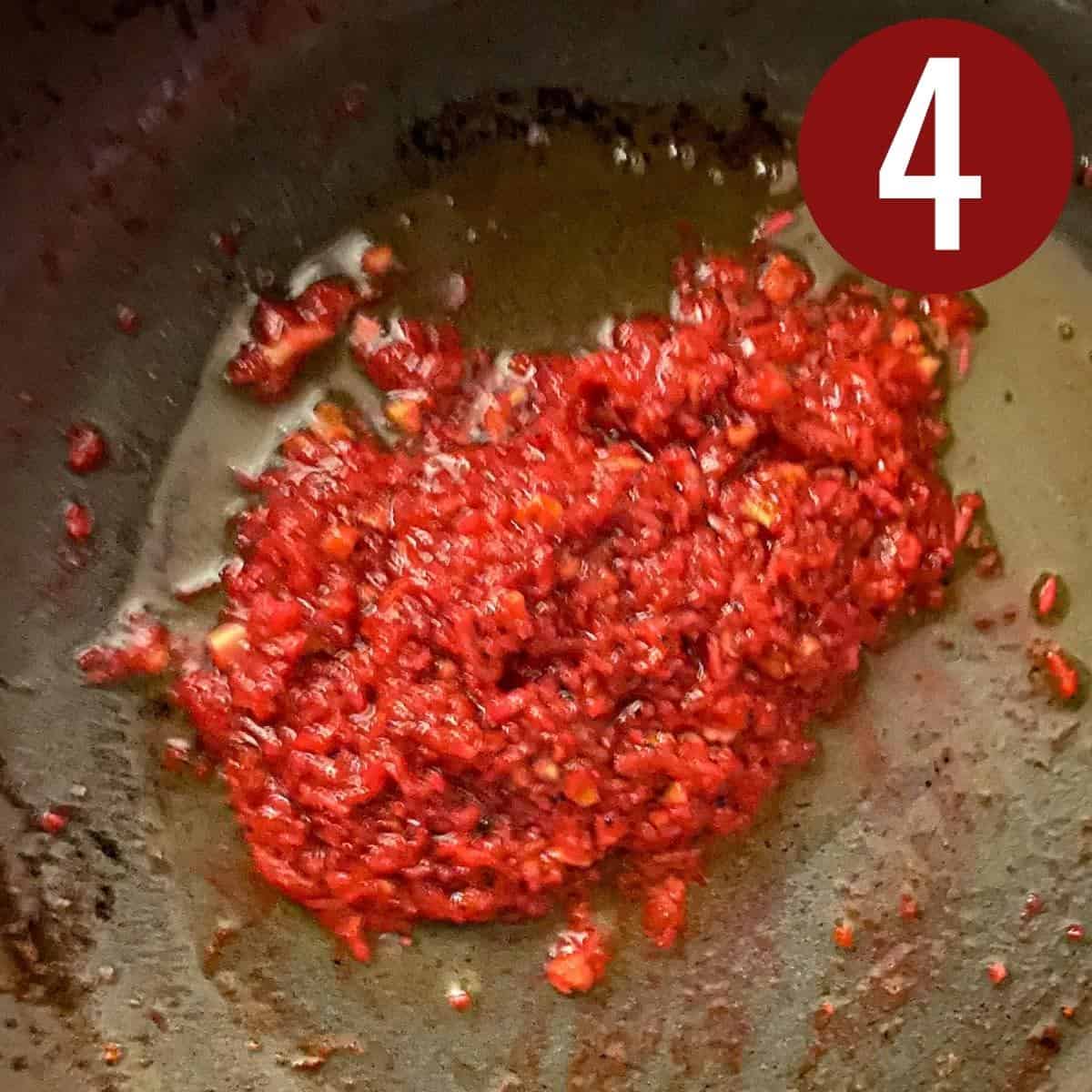
- Step 4: Cook bagoong until reduced and has more of a golden red and caramelized color.
See the Bagoong Alamang recipe card for more specific instructions.
Hint: This savory shrimp paste is an essential companion to Kare-Kare, adding a salty contrast to the rich peanut sauce. It’s also versatile enough to be used as a flavorful dip for green mangoes or a topping for grilled vegetables and rice.
Testimonial
"I tried this recipe for bagoong guisado, and it was delicious! The perfect balance of salty and sweet made it a fantastic complement to my Kare-Kare, and I even enjoyed it with unripe mangoes for a tangy snack. It's a must-have condiment in my kitchen now! ⭐️⭐️⭐️⭐️⭐️" - Marina
What Is Bagoong Typically Served With
Bagoong is typically served as a condiment or side dish in Filipino cuisine. It is commonly paired with:
- Kare-Kare: A peanut-based oxtail stew, where bagoong adds a salty contrast to the rich, savory sauce.
- Unripe Mangoes: The salty, pungent flavor of bagoong complements the tartness of green mangoes.
- Grilled or Fried Vegetables: Such as eggplant or okra, which add an umami punch.
- Plain Rice: Bagoong can be served as a flavorful topping to enhance the simplicity of rice.
- Binagoongan Dishes: Pork binagoongan, where it's cooked with pork and served with plain rice.
It’s often served during meals as an accompaniment to balance richer, heavier dishes or to add complexity to simple ones.
Equipment
To make the perfect bagoong guisado shrimp paste condiment, you'll need the following equipment:
- Heavy-bottomed skillet or pan: Ensures even cooking and prevents the paste from burning.
- Wooden spoon or spatula: For stirring the paste while sautéing to avoid sticking.
- Garlic press (optional): To finely mince garlic for better flavor distribution.
- Measuring spoons: To accurately measure vinegar, sugar, and other seasonings.
- Airtight jar or container: For storing the finished bagoong guisado to maintain freshness.
These tools will help you achieve the best results when preparing this flavorful condiment.
Storage
To store leftover bagoong, follow these guidelines:
- Refrigeration: Store in an airtight container or jar in the refrigerator. It will keep for up to 3 months, as the fermentation and salt content help preserve it.
- Freezing: You can freeze bagoong for longer storage, up to 6 months. Use a freezer-safe container or plastic bag, and thaw in the fridge before use.
When stored properly, the flavor of bagoong may intensify over time but will remain safe to eat.
Top Tip
- Sauté the bagoong over low to medium heat to caramelize the sugars and enhance its natural umami flavor without burning the dish. This slow cooking helps to develop a richer taste.
- Additionally, feel free to adjust the sweetness by adding sugar gradually to balance the saltiness.
- For a more complex flavor, you can also add diced tomatoes or onions during the sautéing process, which will create a delicious sauce perfect for pairing with rice or as a topping for various dishes.
FAQ
The white spots in bagoong are usually caused by the recrystallization of salt or the natural fat from the shrimp during the fermentation process. These spots are harmless and are a normal part of the fermentation, which enhances the flavor of the shrimp paste.
Bagoong guisado (also referred to as ginisang bagoong alamang) means "sautéed shrimp paste" in Filipino. The word "bagoong" refers to fermented shrimp paste, while "guisado" means sautéed or stir-fried. In this dish, the fermented shrimp paste is sautéed with ingredients like garlic, onions, and sometimes tomatoes, vinegar, and sugar to enhance the flavor. It’s often used as a condiment or side dish and is a popular accompaniment to dishes like Kare-Kare or served with rice and vegetables.
Yes, you can make bagoong ahead of time. Making it in advance allows the flavors to develop and intensify over time. Since bagoong has a long shelf life due to its fermented nature, you can prepare it days, weeks, or even months ahead. Just store it in an airtight container in the refrigerator, where it will stay fresh for up to 3 months. This makes it convenient to have on hand for quick use in various dishes or as a condiment.
If you make this recipe, post a photo using the hashtag #JOZmahal. Let's be taste buds and follow me on Facebook, Twitter, Instagram, and Pinterest.
📖 Recipe

Bagoong Alamang Guisado
Ingredients
- 1 tablespoon Olive Oil
- 3 cloves Garlic minced
- 2 tablespoon Shrimp Paste (Bagoong)
- 1 tablespoon White Vinegar
- 1 tablespoon White Sugar
Instructions
- In a medium-sized skillet, sauté garlic in olive oil until golden brown over medium heat.1 tablespoon Olive Oil, 3 cloves Garlic
- Add the bagoong shrimp paste. Stir until well combined.2 tablespoon Shrimp Paste (Bagoong)
- Add vinegar and sugar to the shrimp paste mixture. Turn the heat to low and let it simmer for about 5 minutes.1 tablespoon White Vinegar, 1 tablespoon White Sugar
- Cook bagoong until reduced and has more of a golden red and caramelized color.
Notes
- You can increase the ingredients to your own personalized taste. Of course, the more bagoong you make the more opportunities to serve this with other dishes like I mentioned below. See "What is Bagoong Served With" below.
- Sauté the bagoong over low to medium heat to caramelize the sugars and enhance its natural umami flavor without burning the dish.
- Adjust the sweetness by adding sugar gradually to balance the saltiness.
- Optional to add diced tomatoes or onions during the sautéing process. This will create a delicious sauce perfect for pairing with rice or as a condiment for Beef Kare Kare.
- You can store any leftovers in the refrigerator for up to three months and frozen for up to six months.
Related
Craving for other umami dishes? Try these:
Pairing
These are my favorite dishes to serve with Bagoong Alamang Guisado:
Want more recipes? Go to recipe index to see other gourmet recipes sorted by category!
The post Bagoong Alamang Guisado Recipe (Filipino Shrimp Paste) appeared first on JOZmahal.





